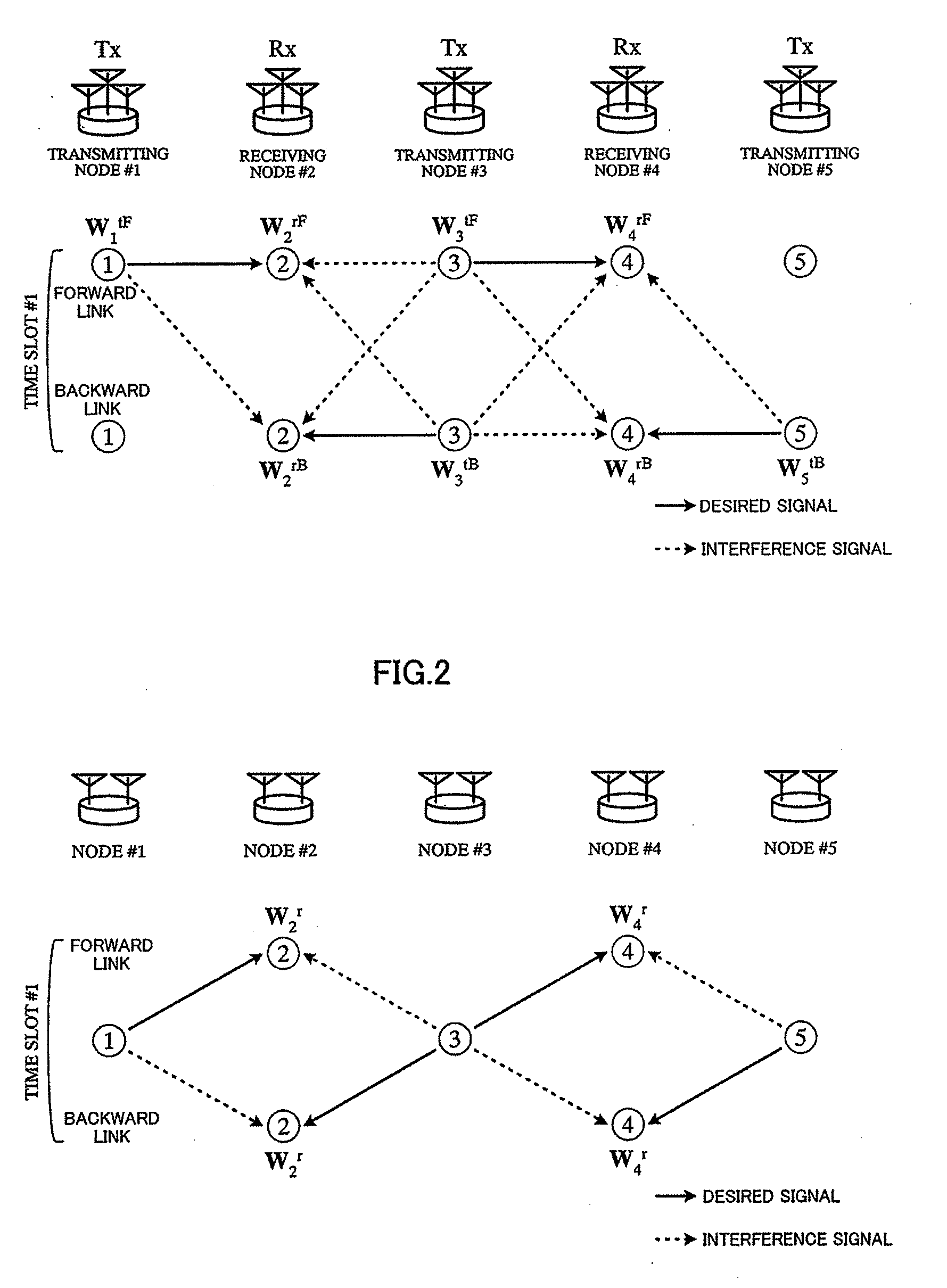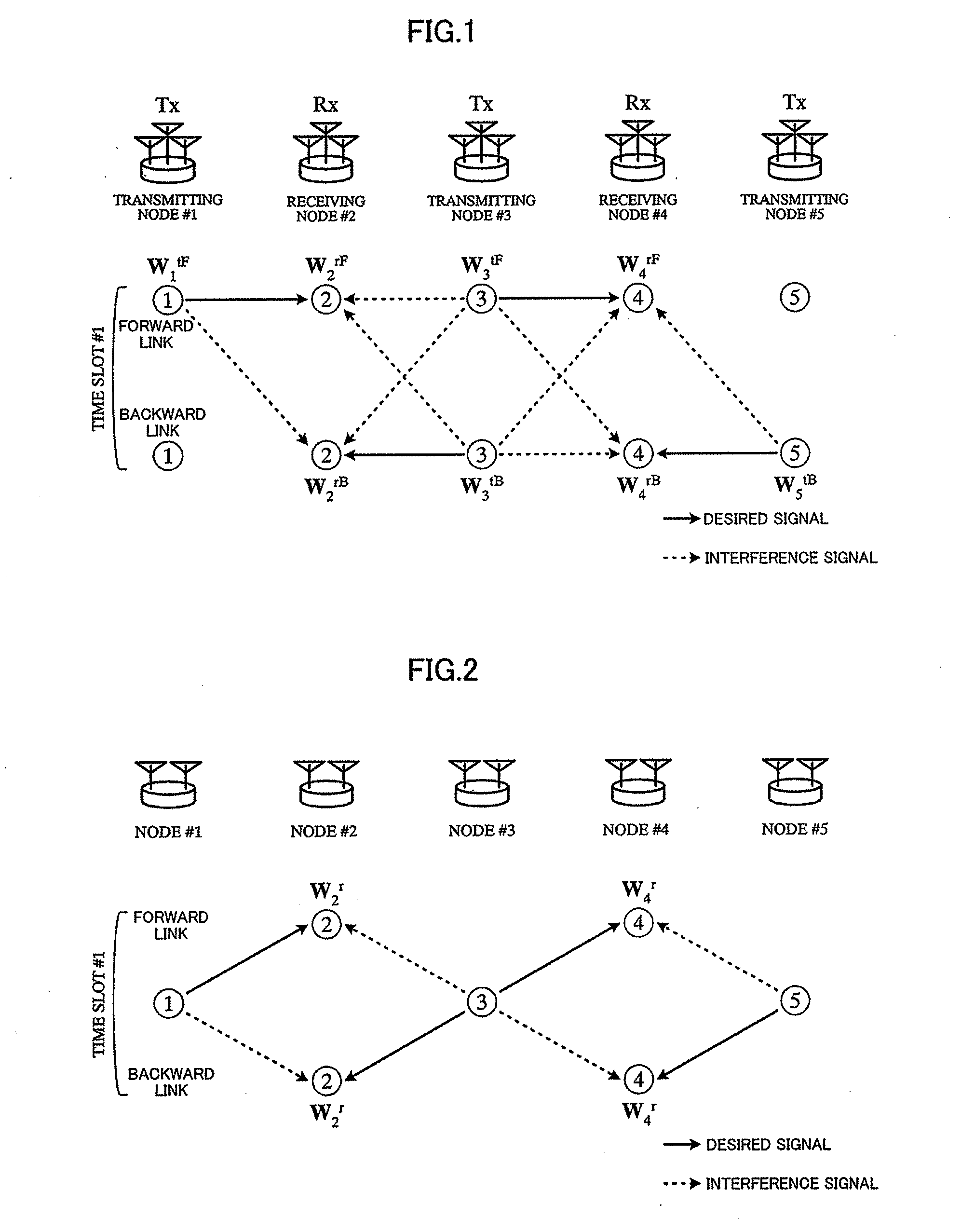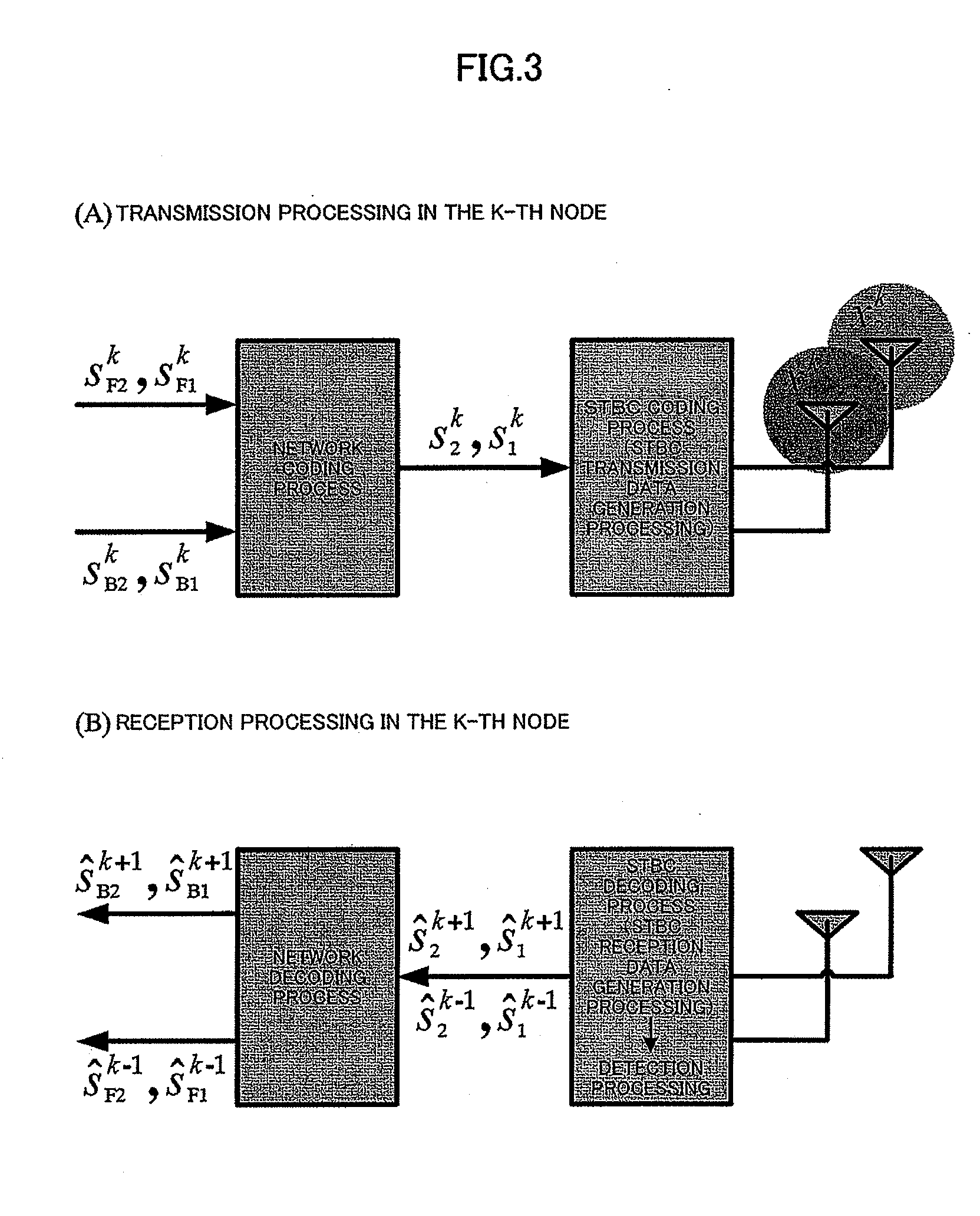Multi-hop wireless communication system
- Summary
- Abstract
- Description
- Claims
- Application Information
AI Technical Summary
Benefits of technology
Problems solved by technology
Method used
Image
Examples
first embodiment
Multi-Hop Wireless Communication System According to the Present Invention
[0106]At first, we explain a multi-hop wireless communication system according to the first embodiment of the present invention. The multi-hop wireless communication system according to the first embodiment of the present invention, uses “MIMO network coding which does not apply STBC”.
Signal Model
[0107]FIG. 2 conceptually shows a model of the multi-hop wireless communication system according to the first embodiment of the present invention. The lower part within FIG. 2, shows a signal model of the wireless communication system that focuses attention on adjacent links. As shown in FIG. 2, each node performs transmission / reception (transmission / reception processing) and the relay transmission of data.
[0108]Next, in the multi-hop wireless communication system according to the first embodiment of the present invention, attention is focused on two links adjacent to a certain node (a forward link and a backward li...
third embodiment
Multi-Hop Wireless Communication System According to the Present Invention (Cross Type Two-Dimensional Multi-Hop Communication System Employing Two-Dimensional MIMO Network Coding (2DMNC1))
[0218]The two-dimensional MIMO network coding of the present invention is applied to a wireless mesh network that has a network topology where two routes intersect as shown in FIG. 10 and FIG. 11.
[0219]In the present invention, with respect to such a wireless mesh network, two intersectant routes are defined as route V and route H. A node existing in the position where two routes intersect is defined as an intersection node C. There are kε{1, . . . ,k−1,k,k+1, . . . ,K} nodes including the intersection node in route V and route H respectively.
[0220]In the present invention, nodes are denoted by adding symbol (H,V) to distinguish the route to the number of node. For example, the (k−1)-th node on route V is represented by V(k−1). The multi-hop wireless communication system employing two-dimensional...
fourth embodiment
Multi-Hop Wireless Communication System According to the Present Invention (Cross Type Two-Dimensional Multi-Hop Communication System Employing Two-Dimensional STBC-MIMO Network Coding (2DSTBCMNC1))
[0290]Hereinafter, a multi-hop wireless communication system according to the fourth embodiment of the present invention will be concretely described. The multi-hop wireless communication system according to the fourth embodiment of the present invention is a cross type two-dimensional multi-hop communication system employing two-dimensional STBC-MIMO network coding (2DSTBCMNC1).
[0291]That is to say, the cross type two-dimensional multi-hop communication system (2DSTBCMNC1) according to the fourth embodiment of the present invention, can realize a more reliable multi-hop relay by combining the cross type two-dimensional multi-hop communication system (2DMNC1) according to the third embodiment of the present invention and the STBC process (the STBC function).
[0292]However, in 2DSTBCMNC1, ...
PUM
 Login to View More
Login to View More Abstract
Description
Claims
Application Information
 Login to View More
Login to View More - R&D
- Intellectual Property
- Life Sciences
- Materials
- Tech Scout
- Unparalleled Data Quality
- Higher Quality Content
- 60% Fewer Hallucinations
Browse by: Latest US Patents, China's latest patents, Technical Efficacy Thesaurus, Application Domain, Technology Topic, Popular Technical Reports.
© 2025 PatSnap. All rights reserved.Legal|Privacy policy|Modern Slavery Act Transparency Statement|Sitemap|About US| Contact US: help@patsnap.com



